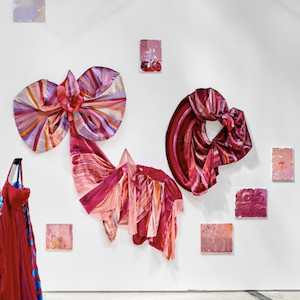Sake; Rice, Water for Great Taste and Design.
By Jo Phillips
It may be slightly strange to Westerners that very simple ingredients make for a national tipple in Japan. Not unlike beer in its production style, starch in rice is fermented with yeast and fresh water to create alcohol. In Japan, where it is the national beverage, traditionally Sake would be gently warmed. Then it would be sipped from a small porcelain cup called a Sakazuki. As traditional as it is it is also the most modern of drinks. Find out more in Sake; Rice, Water for Great Taste and Design. Image Samantha Inman @rememberingtobreathe
Rice and its brewing techniques were bought from brought from China to Japan in the 2nd century BBC. Yet the first recorded existence of Sake wasn’t until the 3rd century CC.
From the 7th to the 10th century in Japan, it was only produced in and for the royal courts. By the 15th century, it was produced far more widely, and by the 18th century, the production of Sake was a full industry.
As much as it is a classic crafted drink it has also been part of a modernist approach. With multiple styling to how it is made and drunk it has transcended its early beginnings.
Different regions, different rice, and water make huge distinctions in the age-old process. Take for, example, Kay Sake, which has been carefully brewed using the finest Gohyakumangoku local rice (known as the queen of sake rice) from the Hokuriku region. Added to that is the pristine waters of the Kaji River which flows from the majestic Iide mountains. It is this soft water that allows for slower brewing to produce such high-quality sake.
This exquisite drink is crafted at the renowned Aumont Brewery, founded in 179os. Its quality ensured being overseen by expert Master Brewer and pioneer in producing sake in a natural environment, Tanaka-Toji.
Kay Sake looks to demystify this elixir to Westerners allowing them not to think of it as a niche product. Not just to be enjoyed in its traditional cold warm or hot straight-up serve. It can be looked at as an aperitif or even to build cocktails around.
KAY Sake offers sake as a distinctive alternative to traditional cocktails; for example
KAY on the Rocks
Serve 70ml KAY Sake in a rocks glass with large cubed ice Garnish with a sprig of sage (savoury) or a grapefruit zest (fruity)
KAY Japanese Martini
60ml KAY Sake, 30ml vodka (or gin), 5ml dry vermouth. Briefly stir the vermouth with big ice cubes in a mixing glass, then strain off the remainder liquid. Add the Sake and Vodka and stir for some 15 seconds, pour into a martini glass Garnish with 3 blueberries on a wooden stick
KAY Japanese Martini
60ml KAY Sake, 30ml vodka (or gin), 5ml dry vermouth. Briefly stir the vermouth with big ice cubes in a mixing glass, then strain off remainder liquid. Add the Sake and Vodka and stir for some 15 seconds, pour into a martini glass. Garnish with 3 blueberries on a wooden stick.
As a standalone drink find light creamy tones followed by hints of soft rice within its bouquet. To taste, find creamy tones, fragrant crisp aromas and fruity notes of fresh green Apple, Melon and Pear. Its finale lingers with a freshness, and a soft touch of umami at the end.
Made from just three ingredients, water, (malted) rice and yeast, and at 15.8% alcohol content, this Sake is the perfect aperitif for those seeking a health-conscious alcohol option. KAY Sake has also recently been awarded a Gold Medal by the judges of Milano Sake Challenge 2024.
“At KAY Sake, we see a gap in the market to redefine the sake category with a contemporary perspective —elevating it as a sophisticated, versatile drink for any occasion, from cocktails to the aperitif hour.https://centmagazine.co.uk/fall-in-love-with-the-hottest-trends-salone-del-mobile-milano-2024/
Every bottle we craft is a celebration of heritage, innovation, and purity, designed to bring people together across cultures and borders. KAY Sake isn’t just a drink—it’s an experience.”
Jack Ruys, CEO of KAY Sake
The extra touch to elevate this Sake was that Kay worked with product designer Supremo Marcel Wanders. He looked to capture the essence of Niigata. Wanders drew inspiration from Echigo’s pure waters. They way they flowed into the Kaji River, blending Niigata’s beauty and the sake brewing process into a unique design philosophy.
He says of the experience
Design is not a mere exercise in style, but the study of aesthetic harmonies that celebrate a radiant and harmonious growing humanity. Striving for romance, intelligence, durability and value defines the recognisability of my hand.
Marcel Wanders
Having worked across both product design and interior design, creating the brand visuals of a drink is a different process. He talks of a ‘brand visual’ having wings, that can go anywhere and can be the creation of an endless illusion of space and time
And ask for his preferred serve, the designer said quite simple, with ‘a slice of lime and a rock of ice by the beach.
Sake, a traditional staple of Japanese culture, is presented by KAY Sake as a modern alternative to spirits that is lower in alcohol, gluten-free, and free from sulphites and additives.
By partnering with renowned product and interior designer Marcel Wanders, KAY Sake appeals to a mindful and curious audience who value unique, thoughtfully crafted beverages. This venture combines the artistry of design with the cultural depth of sake to inspire a new drinking experience.
To find out more about Kay Sake visit kaysake.com
To find out more about Marcel Wanders please visit marcelwanders.com
If you enjoyed reading Sake; Rice, Water for Great Taste and Design then why not read The Irresistible Dandy In The Written World Here
.Cent Magazine London. Be Inspired; Get Involved




